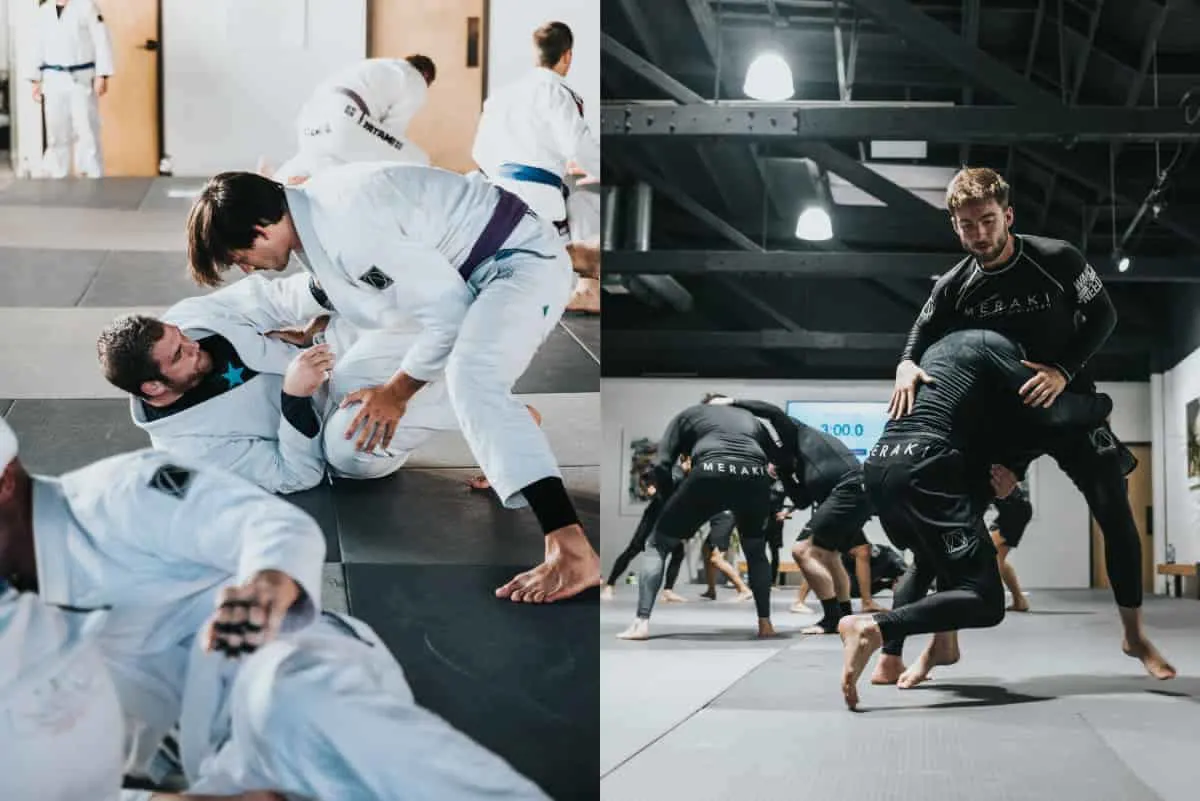Japanese jujutsu was a precursor to all other jiu-jitsu styles. Since then, different popular jiu-jitsu styles have emerged, such as Brazilian jiu-jitsu (BJJ), Gracie jiu-jitsu (GJJ), American jiu-jitsu (AJJ), Combat jiu-jitsu (CJJ), and no-gi jiu-jitsu.
BJJ
BJJ color belt ranks are separated into two main groups, each with five different solid color belt ranks. Each color belt has stripes or sub-ranks in the youth belts. Youth (below 16 yrs of age): white, gray, orange, green, black. Adults (above 16 yrs of age): white, blue, purple, brown, and black.
Gi BJJ is better than No-Gi BJJ if you want to learn practical techniques based on grabbing onto an opponent’s clothing. In contrast, No-Gi is better than Gi BJJ if you plan to become an MMA fighter, where you need to learn to apply techniques without grabbing onto an opponent’s clothing.
Brazilian Jiu-Jitsu is effective in a street fight because it allows you to control an attacker without needing to throw strikes, which can be chaotic and dangerous both to the striker and the recipient.
As a general rule, you’re paying a high price to learn Jiu-Jitsu because certified BJJ instructors have spent many years of training to obtain BJJ black belt which is considered the most difficult black belt to get.
Learning BJJ moves is not physically hard because BJJ is created for anyone to learn regardless of their size, strength, and athletic level. However, the total commitment that is required to become good at BJJ can be challenging for most people.






